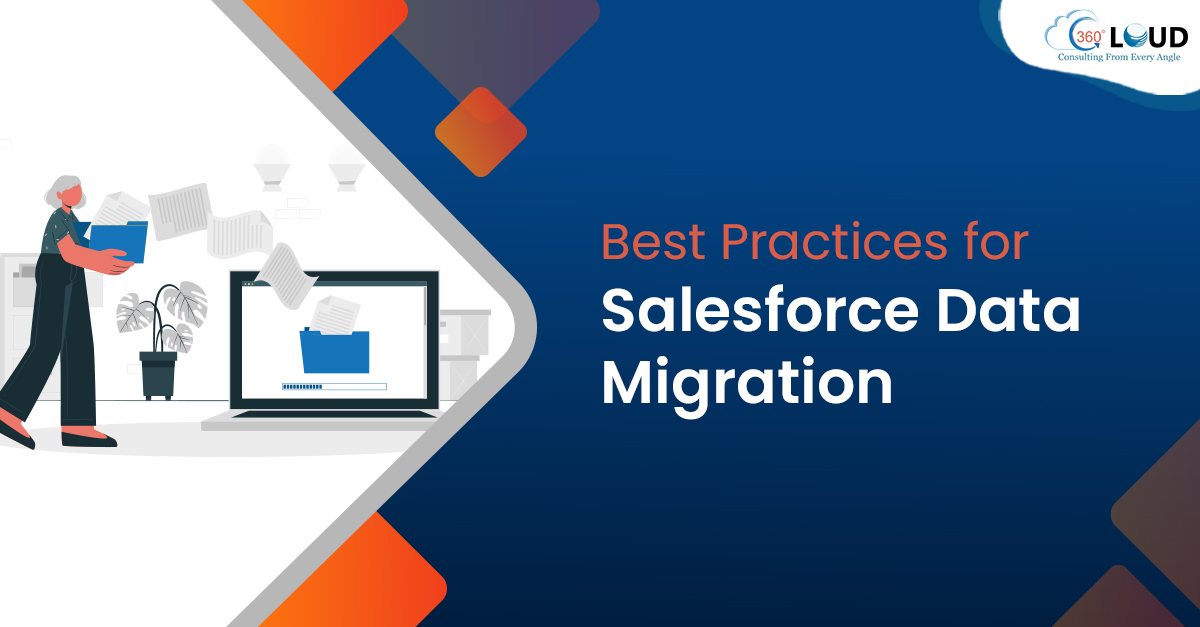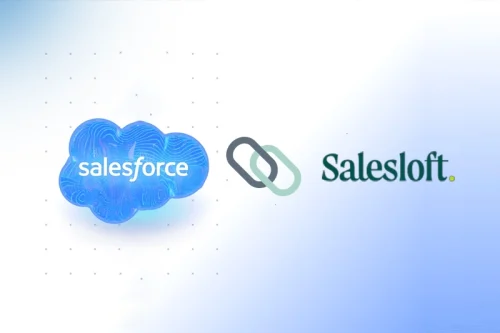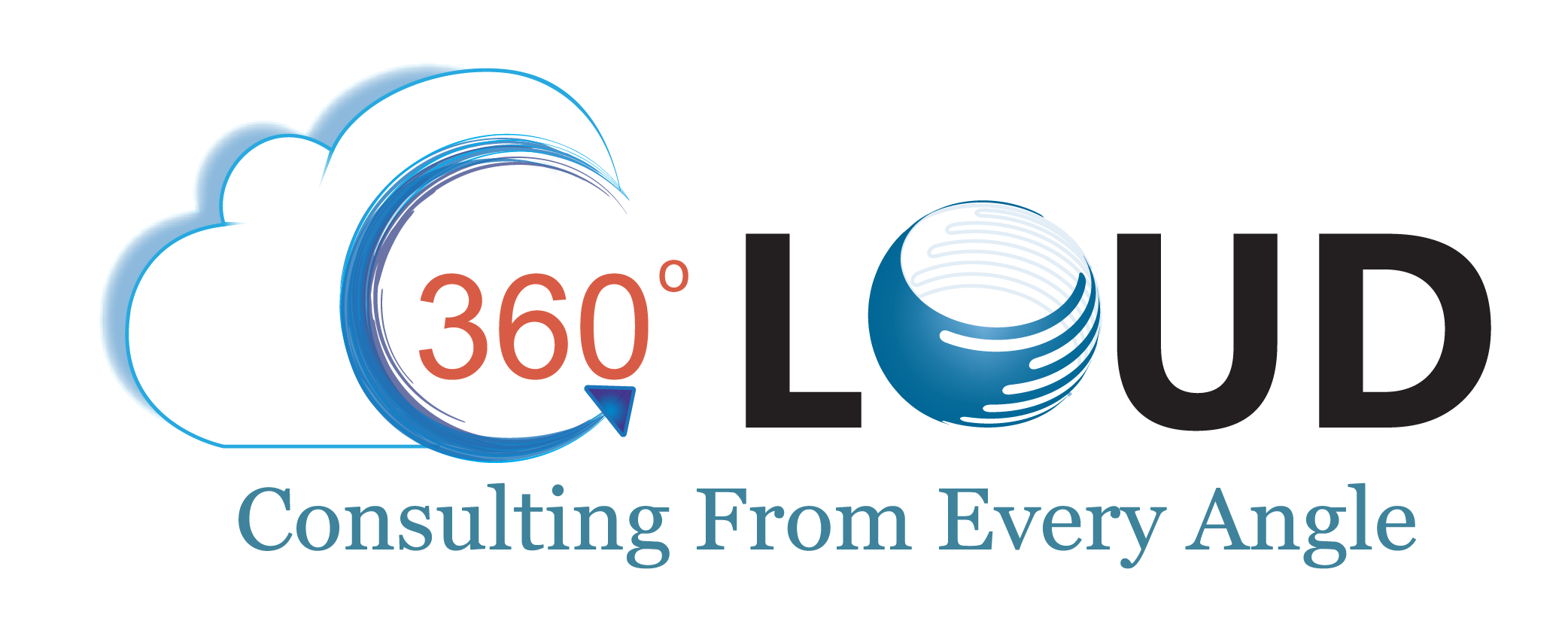Best Practices for Salesforce Data Migration
28 Jun 2021
Table of Contents

Conducting data migration from or into Salesforce can be time-consuming but a necessary task. The data migration process in Salesforce is a challenge for any enterprise. You might face both organizational and technical challenges, which should be managed and resolved for a smooth Salesforce integration process. Therefore you might need Salesforce developers who follow best practices for Salesforce data migration to ensure a smooth transition.
While working on data migration, there are chances that the data might get misaligned. It is possible because of reasons like:
- Companies might have databased managed by disparate segments or departments.
- Inappropriate synchronization of data with Salesforce.
- Legacy systems might not communicate with the APIs or have unnecessary data.
To overcome these issues, companies need a strategy by experts who are well-versed with the best practices for Salesforce data migration.
Table of Contents
What are the Best Practices for Salesforce Data Migration
The goal of data migration is to keep data in a centralized location, clean, and up-to-date. The experienced Salesforce integration partners follow the best practices for Salesforce data migration, which are listed below:
1. Have a Data Governance Plan
The first best practice for successful data migration is to create and commit to a data governance plan.
Your business should follow a clear process for data migration, ensuring all stakeholders are on the same page. The plan can be an enterprise-wide data management initiative, or it can be a simple agreement between the individuals responsible for Salesforce and the system data management. Following Salesforce governance best practices creates an ongoing process for CRM data migration, ensuring data is cleaned for the migration.
2. Ensure Data is Organized
The process of data migration would not be a success without focusing on data quality. You need to have clean source data to get started. If you are using a custom field, it should go through a rigorous vetting process that will explain what the field is, how it will be used, and identify the good or bad data.
Salesforce administrators will use this information to create validation rules, pick lists, and field dependences that will help to perform data mapping. Sometimes, validation rules and pick lists might not be enough to ensure quality data. You can run regular reports to audit the field and check for junk data.
3. Get Started with a Pilot Project
Salesforce has a flexible data structure, but it can conflict with existing systems that follow inappropriate and inflexible data governance processes. This can lead to tension between different departments. One of the best practices for Salesforce data migration is to start with a simple pilot project for the team to understand how CRM can perform easy data import.
You might have useful sales data in an older, less flexible database where it’s hard to extract value from that information. You can use default data settings in Salesforce to filter out garbage data and bring that legacy data into the Salesforce CRM database. After that, you can use Salesforce reporting to extract trends and identify purchase behavior.
A pilot project will help understand the value, allowing the data governance team and other departments to be more ready for Salesforce data migration.
4. Monitor the Integration
Data migrations and integrations can be ongoing projects, and this is where companies make the mistake of considering it a one-time thing. It is important to focus on constant monitoring to make sure data conforms to the standard. This can be avoided in two ways:
- You can use a tool here for integration to identify data issues and get timely alerts about them.
- You can run exception reports to identify data that doesn’t conform to the standard.
For best results, you should maintain a combination of an integration tool and reports. Consider using Salesforce dashboard tools to track progress on data quality and duplicate records.
5. Use Third-Party Data Integration Tools
Using the best technology is a way to strengthen your plan for the data migration process in Salesforce. You need a strong process backed by technologies and tools to perform data integration that goes well with the company. Weak technology can cause a good integration plan to fall short, and this is something you will never want.
Using third-party tools can be of great support here as it provides numerous features that could make your work with Salesforce easier:
- You can go for drag-and-drop tools to build data pipelines while cleansing and checking data.
- Tools can help to achieve fully configurable pipelines that can give alerts for bad data.
- Third-party tools ensure secure integration of processes behind your firewall using Salesforce.
Get Experts Who Follow Best Practices for Salesforce Data Migration
To start extracting value from your Salesforce implementation, you must ensure that your data migration from the legacy system goes smoothly and safely. Even if you are aware of best practices, you might end up making a mistake, which can have a negative result for your business.
You need a team that can be trusted with Salesforce data migration, ensuring a smooth data flow without any data loss. Talk to our experts and find out how we can help you with your Salesforce-related business needs.
About the author
Atul Kumar SrivastavAtul Kumar Srivastav is the Sales Head at 360 Degree Cloud with over a decade of experience in Salesforce consulting. He specializes in cross-cloud solutions, AI-driven strategies, and aligning implementations with long-term growth goals. Atul is passionate about helping enterprises maximize Salesforce ROI through adoption, integration, and scalable business impact.
Recent Blogs
 Salesforce Clouds
Salesforce Clouds
Complete Guide to Salesloft Salesforce Integration for Sales Team
In the fast-paced world of modern sales, efficiency is driven by a powerful duo: Salesloft for high-velocity outreach and Salesforce as the ultimate system of record. While Salesloft serves as the “cockpit”…
Read More Salesforce Services
Salesforce Services
10 Best Salesforce Implementation Partners to Consider in 2026
In 2026, Salesforce is far more than a CRM; it is a complex, AI-driven engine powered by Agentforce and Data Cloud. While the platform’s potential to transform business is…
Read More Salesforce Clouds
Salesforce Clouds
How Salesforce Data 360 Fuels Context-Aware AI Agents
The core issue crippling most enterprise AI projects is fragmented, incomplete, and outdated data. Customer records are often scattered across the CRM, ERP systems, data…
Read MoreReady to Make the Most Out of Your Salesforce Instance?
Our Salesforce aces would be happy to help you. Just drop us a line at contact@360degreecloud.com, and we’ll take it from there!
Subscribe to our newsletter
Stay ahead with expert insights, industry trends, and exclusive resources—delivered straight to your inbox.



